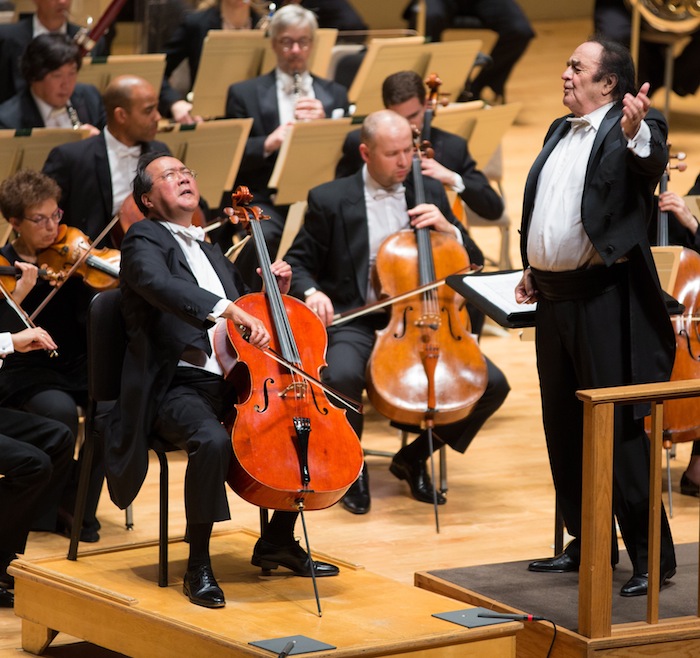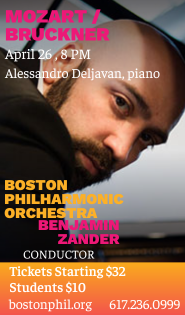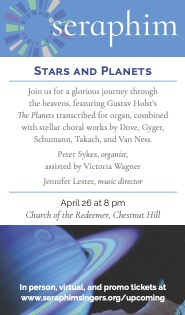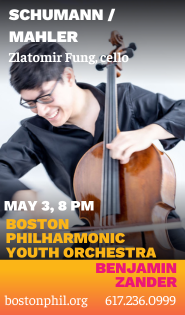Yo-Yo Ma’s memorable Elgar highlights English program from Dutoit, BSO

Yo-Yo Ma performed Elgar’s Cello Concerto with Charles Dutoit and the Boston Symphony Orchestra Thursday night. Photo: Robert Torres
By 1919, Edward Elgar faced a world that he no longer recognized. World War 1 raged in Europe and brought a violent end to the old way of life. “No more music,” Elgar wrote in a letter to Alice Stuart-Wortley. “Everything good and nice and clean and fresh and sweet is far away—never to return.”
Elgar poured his melancholy into his most sorrowful work, the Cello Concerto, which was heard in a powerful performance by cellist Yo-Yo Ma and the Boston Symphony Orchestra as part of an enticing all-British program Thursday night at Symphony Hall. Charles Dutoit, who celebrates his 80th birthday with this week’s concerts, led the way.
The four movements of the concerto, which span just over half an hour, flow with dark lyricism, a marked contrast to the Edwardian swagger that bristles in Elgar’s First Symphony and most famous orchestral work, the Enigma Variations. The concerto has remained a repertory item since its composition, and it has also been popular among connoisseurs of recordings. Jacqueline du Pré’s 1965 studio recording with John Barbirolli and the London Symphony Orchestra is widely considered to be the most expressive interpretation.
Ma is certainly no stranger to the work, having released his own critically acclaimed recording with André Previn and the London Symphony Orchestra in 1985. His playing Thursday night captured the work’s mournful depths to palpable effect, an aspect that makes Elgar’s concerto a particularly rich experience when heard in live performance.
With warm, singing tone, Ma played the phrases of the outer movements with freedom of expression and gentle rubato. The recitative that opens the work sounded with poignant sadness, like a cry from the depths of the earth. When it returned at the end of the piece, Ma shaped it into a phrase of stark power. The concerto’s difficulty lies in its musicality rather than its technical passages. Yet the quick lines that make up the work’s second movement had a nervous energy as Ma tossed off the phrases nimble touch and dexterity.
The slow movement was especially beautiful. There, Ma coaxed a color wheel of sounds from his cello. This most poignant of Elgar’s music flowed through rosy low pitches and radiant, singing high notes. Throughout, Ma tapped into the operatic lyricism of the movement, shaping the phrases with a vocal arc.
A similar song-like grace also marked Dutoit’s accompaniment. With gentle waving gestures, the conductor wove a soft bed of sound, sensitively shading the phrases to match Ma’s tender expression. The BSO strings glowed with warmth in the concerto’s moments of spare accompaniment.
The orchestra was equally superb in the concert’s second half, which featured Holst’s The Planets.
This most popular of the composer’s few orchestral works consists of seven colorful movements, each of which depicts emotions drawn from both astrology and ancient mythology associated with the heavenly bodies.
With their searing orchestral textures, works like this one are specialties for Dutoit. On the podium, the conductor has the contagious energy of a young man, leading with broad strokes and a careful eye to the phrasing of each movement. In “Venus,” he wove threads of melody into a soft web of sound, with silvery solos from concertmaster Malcolm Lowe and acting principal cellist Martha Babcock adding a glistening veneer. “Neptune,” the final movement, unfolded in sheets of colorful orchestration. Dutoit crafted icy brass chords, prickly string sonorities, and golden harp strums into phrases that seemed to glow at a distance. The women of the Tanglewood Festival Chorus, prepared Lisa Graham, provided soft radiance from offstage.
The orchestra responded robustly to Dutoit’s guide in the more energetic movements of the suite. He built the principal theme of “Saturn” into gleaming towers of sound. The impish marches of “Uranus” were fittingly mischievous, and the quicksilver lines of “Mercury” took off with graceful energy. “Mars” thundered with power. There, an orchestral crescendo swelled to piercing heights before breaking like a wave.
Dutoit also drew out the closing statements for dramatic effect. “Jupiter” sparkled, with Dutoit shaping the dance-like themes with wide, through tasteful rubato. The hymn central to the movement swelled in phrases of grandeur.
Fine playing also marked the opener, William Walton’s Portsmouth Point Overture.
The six-minute piece was Walton’s first orchestral work, and it possesses the same jazzy intensity that the composer would later mine in his popular Johannesburg Festival Overture and blazing cantata Belshazzar’s Feast.
Dutoit navigated the tricky mixed meters and cross rhythms with aplomb, and drew playing of crisp vitality, making a strong case for a work that hasn’t been performed by the BSO in Symphony Hall since 1941. Let’s hope it doesn’t take seventy-five years to hear it again.
The program will be repeated 1:30 p.m. Friday and 8 p.m. Saturday and Tuesday at Symphony Hall. bso.org; 888-266-1200
Posted in Performances



